10 Types of Protea Flowers & All 99 Protea Species
Author: Jen Worst | Editor: Omar Alonso
Review & Research: Jen Worst & Chris Miller
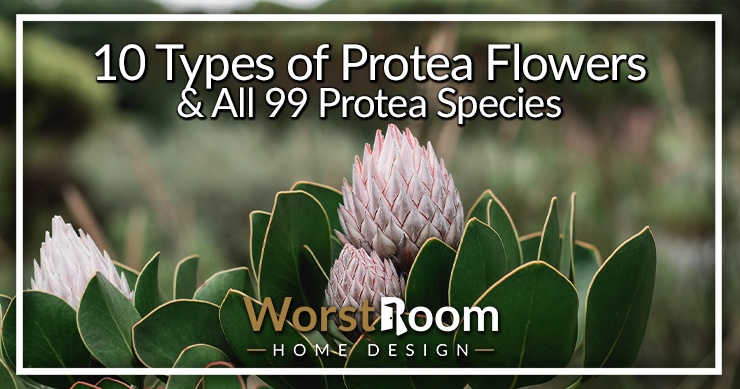
Growing different types of protea of various sizes and colors is a great option if you want to give your garden a vibrant and traditional look. Being around 300 million years old, this flower group is divided into 19 groups of 99 species.
So, you have countless options to choose from as the types of protea flowers vary from one another in appearance, habitats, and growing needs. However, most proteas, often called sugarbushes, are characterized by thick and hard leaves, allowing them to survive in the toughest weather.
Besides, the protea roots are clumped together for better absorption. Want to know more about the protea varieties? Let's dive deep and learn more about the most beautiful and easy-growing proteas for your summer and spring garden.
10 Types of Protea Flowers
Protea flowers generally have a large tubular shape and are available in shades of yellow, orange, red, pink, white, and cream. They require bright sunlight and aerated acidic soil for proper growth.
These South African sugarbushes were named by Carl Linnaeus in 1735 and collected in his Species Plantarum and the Linnaean Herbarium. Below are the most common proteas characteristics that easily grow in regular garden environments.
King Protea
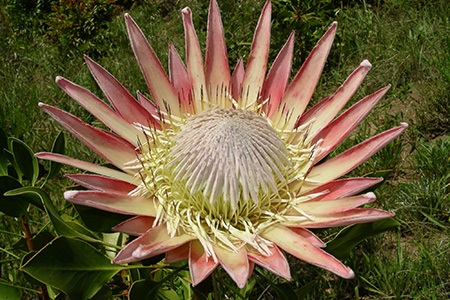
Also known as king sugar bush and giant protea, this one has the largest head in the protea family. The flower consists of a collection of smaller blossoms in the center encircled by large colorful brackets. Usually, a full-grown flower head measures 5 to 12 inches.
Although the color of the bracts ranges from deep crimson to creamy white, however, pink and red ones are the most popular among gardeners. You can expect up to 10 flowers each season, but sometimes the number exceeds 40.
The King Protea plant is characterized by its thick stems and glossy, deep green leaves. It can grow 1 to 7 feet in height even in the harshest weather conditions. Nectarivorous birds, bees, beetles, etc., birds and insects are attracted to its huge flower head, making it an ideal choice to increase pollination in your garden.
Plus, King Protea is excellent as the centerpiece of any types of bouquets, and the dried flowerheads are also greatly valued. As the plants bloom in the warm months, the plant is great for Coastal and Mediterranean gardens.
Queen Protea
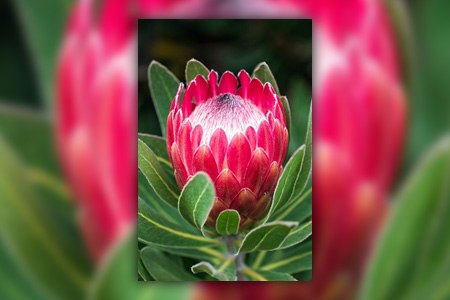
With the second largest head, Queen Protea is one of the most sought-after types of protea flowers. A rounded bowl-shaped head and curved brackets in the most beautiful hues are what attract the gardeners most.
While the floral bracts can be pink, rosy red, greenish cream, deep carmine, and creamy white, the bract beards are mostly brown or purple-black, which means they can match well with many types of weigela among other purple flowers. The fluffy flower head can reach 15-16cm in length.
You can easily identify a Queen Protea plant from its grey-green leaves with noticeable veins and red or yellow midribs. As for the plant length, it can either remain as a small shrub or grow up to 8 feet, depending on the area. The plant requires bright sunlight and low acidic soil for proper growth.
Although it's a slow grower, Queen Protea lives longer than most flowering plants, some living up to 30 years or more. The flowers bloom in the spring months and invite nectar-feeding birds and insects. Queen Protea is widely valued for commercial purposes as it has a long vase life and resistance to frost and drought, so don't be afraid to invest in matching any types of vases to this flower.
Pink Ice Protea
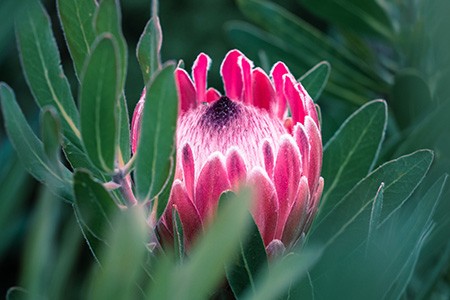
While most of its counterparts take quite some time to bloom, Pink Ice Protea is among the fastest growing ones taking only 9 to 12 months to provide gorgeous pink cup-shaped flowers.
The plant tolerates temperatures as low as 20° Fahrenheit and both sunny and shady corners, making it an ideal choice for any garden.
Besides, these protea types grow well on various soils, including acidic and heavy soils. As the plant can be 6 to 8 feet like a hedge, it can easily be planted in containers.
This deer-tolerant variety provides clear pink flowers all year round. All these definitely make it an ideal plant for home gardens as well as commercial cut flower uses.
Little Prince Protea
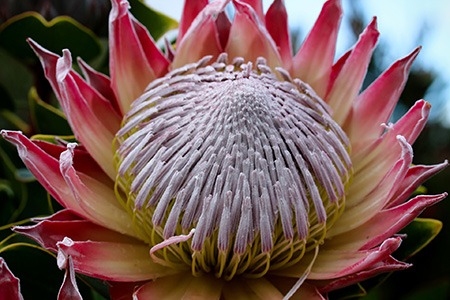
Want a smaller protea for your pots? The Little Prince grows only 1m high and 75cm wide. Plus, it requires very little water and fertilizer once established properly. You can grow it in heavily acidic or neutral pH. However, make sure the soil is well-drained before planting.
As for the flower, it has white or yellow florets in the middle, and the encircling bracts are mostly dark red or pink. Typically, one stem grows only one compact flower head. The blooming period for Little Prince is during winter, fall, or spring.
You can easily identify this protea species from its spoon-shaped, curvy, bright green ornamental leaves. The ideal growing regions for Little Prince include cool, arid, temperate, and mid-tropical.
Rose Mink Protea
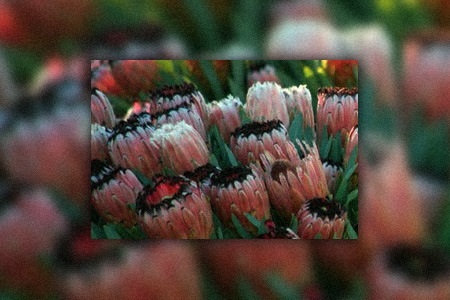
With its black bracket tips and white hairs, the Rose Mink types of protea flowers are one of those that you'll either love or hate. The plant is among the larger proteas that work as excellent hedges in larger gardens.
It grows 6 to 10 feet high and is characterized by thick gray-green leaves. Like its counterparts, Rose Mink also shows great tolerance to extended drought and frost, thanks to the clustered roots.
The plant grows well in full sun and requires well-drained soil for optimum growth. Besides, this protea grows in a wide variety of soils, including alkaline and sandy ones. I've seen these grown with various types of lilacs around the base and thought it was stunning.
Blushing Bride Protea
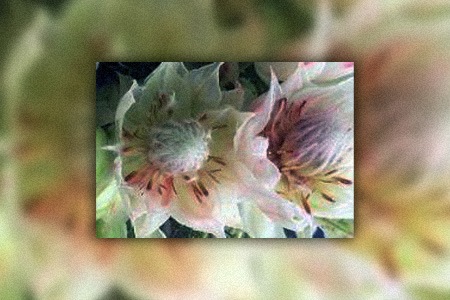
Blushing Bride will be an excellent choice if you want to grow the perfect wedding flower. While most protea plants produce only one flower for each stem, this one produces 5 to 10 blooms per bunch.
The star-shaped flowers are mostly creamy white, although pink Blushing Brides are also pretty common. Apart from its classy color and unique shape, this protea variety is prized for its long vase life and quick blooming nature. Plus, you can grow it indoors in colder regions.
However, you need to remember these protea flower types don't hold up well against frost. It also needs acidic soil to grow up. Blushing Brides bloom mostly in summer. Fall and winter varieties are also common among commercial growers.
Bot River Protea
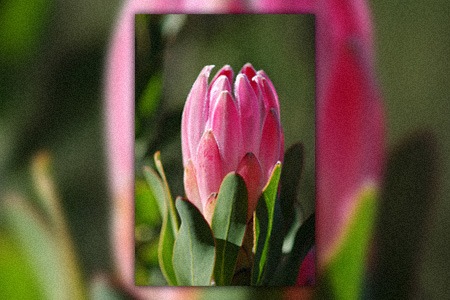
One of the most grown proteas in the industry, Bot River or Protea Compacta, is an ideal member of the protea family. It's identified by the upwardly curved velvety leaves that create striking blue-green foliage. The flower is grown on a single stem up to 3.5 meters tall.
This protea stands out because its gorgeous pink flower brackets encircling the middle mass, giving the flower a wine-glass shape. Creamy white Bot Rivers are also common, but the pink ones are definitely valued the most.
Unlike many proteas, this one is a vigorous grower but with a shorter life span of 10 years. You can expect the plant to flower mid-winter within a year of plantation.
Black Beard Protea
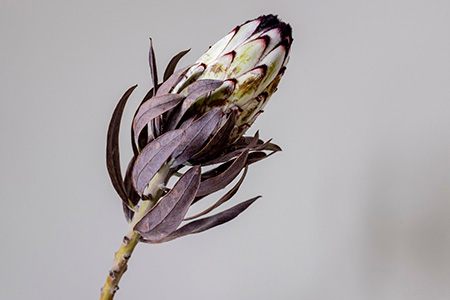
The Black Beard is a lesser-known yet unique types of protea among the most striking flowers. The outer surface of this flower head features around 6 rows of white bracts with black or cream hair. Each bract has a spoon-shaped tip covered in black or purple-black close-pressed hairs.
This unique combination of black and white is the main identifying characteristic of Black Beard. You can also identify it from its upwardly pointed leaves growing from a single stem and almost covering the flower head.
With proper sunlight and well-drained acidic soil, Black Beard can grow 2 to 3 meters long and produce flowers from autumn to spring. If you have a thing for unique-looking flowers, this one is an ideal choice.
Flame Giant Protea
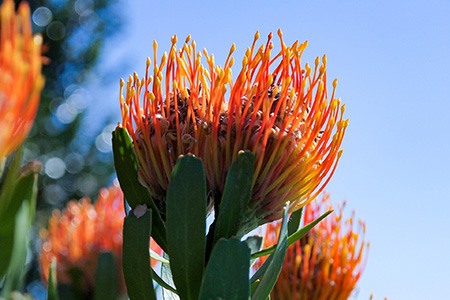
As the name suggests, the Flame Giant Protea flower looks like a fireball when fully grown. The pincushion-like center part has a beautiful yellow color that compliments the surrounding orange spikes.
Together, these protea varieties will give your spring and summer garden a gorgeous fire-like look. While the flowerhead grows 4 to 6 inches wide, the evergreen plant reaches 6 feet.
It can withstand cold, hardy, and light drought. Although Flame Giant is a fast grower, it has a relatively short life span of only 8 years. Grow this protea to add a dramatic look to your home garden.
Possum Magic
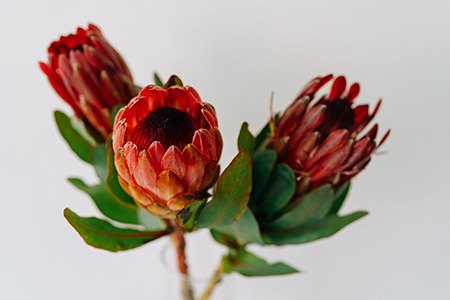
This one is a typical dwarf protea flower type with its showy fluffy yellowish-orange flowers, dark green foliage, and grayish green stem. You can easily grow it in a pot by shaping the plant as a hedge. As the flower easily lasts one week or more after detachment, it's often mass planted for general landscaping.
The long vase life and higher production of these types of protea make them valuable as cut flowers. You need to grow the Possum Magic in neutral or acidic soil as they are intolerant to clay and alkaline surfaces.
Plus, the plant requires regular watering for at least 2 years, and after that, the water requirements become lower like most other protea types.
List of All Protea Species
Here we'll list all of the available protea species, under headings with their species section name and then the common name of that section. Each protea will be listed with their common name first and then their species name. We will alphabetize by section first, and then by species name within the sections. Each image pictures the first or second protea flower in each section list.
Craterifolia - Penduline Protea
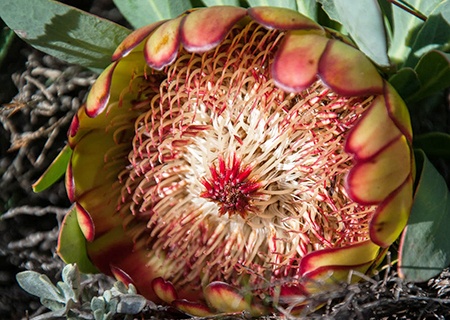
- Scarlet Sugarbush - Protea effusa
- Kamiesberg Sugarbush - Protea namaquana
- Nodding Sugarbush - Protea pedula
- Hidden Sugarbush - Protea recondita
- Sulphur Sugarbush - Protea sulphurea
Crinitae - Eastern Ground Protea
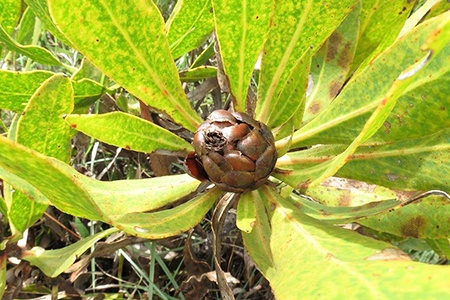
- Leafy Sugarbush - Protea foliosa
- Tufted Sugarbush - Portea intonsa
- Swartberg Sugarbush - Protea montana
- Tenacious Sugarbush - Protea tenax
- Kouga Sugarbush - Protea vogtsiae
Cristatae - Moorland Protea
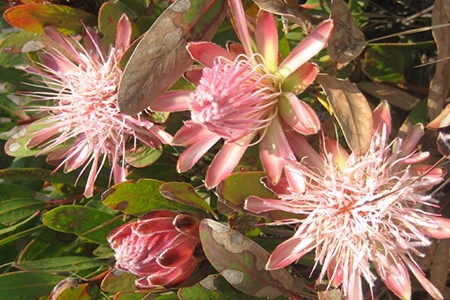
- Inyanga Sugarbush - Protea asymmetrica
- Wentzel's Sugarbush - Protea wentzeliana
Exsertae - White Protea
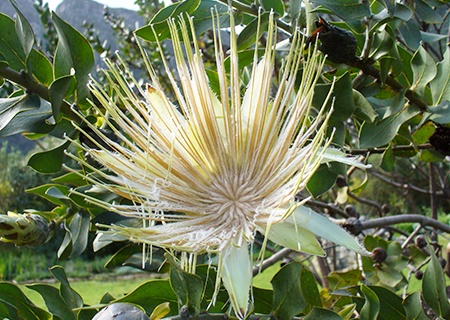
- Common Shuttlecock Protea - Protea aurea aurea
- Potberg Sugarbush - Protea aurea potbergensis
- Hottentot Sugarbush - Protea lacticolor
- Forest Sugarbush - Protea mundii
- Water Sugarbush - Protea punctata
- Waterlily Sugarebush - Protea subvestita
- Castcade Sugarbush - Protea venusta
Hypocephalae - Rodent Protea
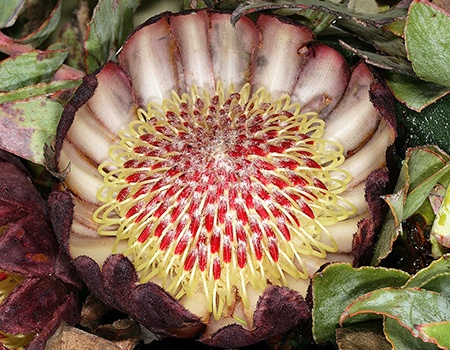
- Claspingleaf Sugarbush - Protea amplexicaulis
- Heartleaf Sugarbush - Protea cardata
- Linearleaf Sugarbush - Protea decurrens
- Patentleaf Sugarbush - Protea humiflora
- Awl-Leaf Sugarbush - Protea subulifolia
Lasiocephalae - Savanna Protea
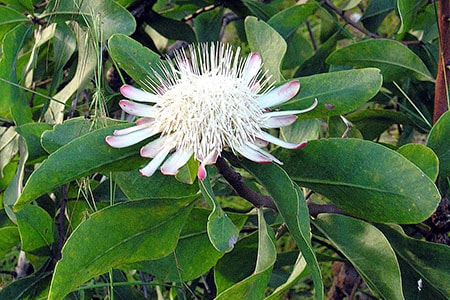
- African Sugarbush - Protea gaguedi
- Dwarf Savanna Sugarbush - Protea welwitschii
Leiocephalea - Grassveld Protea
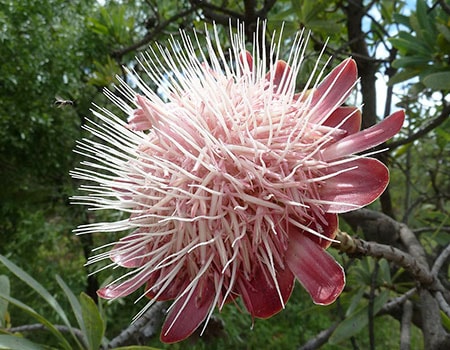
- Highveld Sugerbush - Protea caffra caffra
- Manica Sugarbush - Protea caffra gazensis
- Kilimanjaro Sugarbush - Protea caffra kilimandscharica
- Malawi Sugarbush - Protea caffra nyasea
- Drakensberg Sugarbush - Protea dracomontana
- Cloud Sugarbush - Protea nubigena
- Dainty Sugarbush - Protea parvula
- Sickle-Leaf Sugarbush - Protea petiolaris elegans
- Sickle-Leaf Sugarbush - Protea petiolaris petiolaris
- Dwarf Grassveld Sugarbush - Protea simplex
Leiocephalea - Shaving Brush Protea
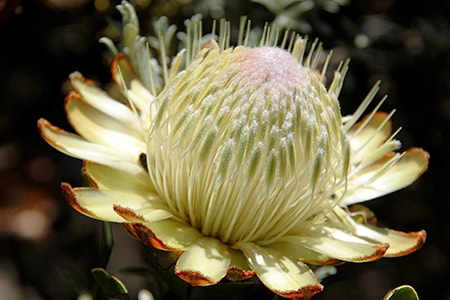
- Kilimanjaro Sugarbush - Protea caffra kilimandscharica
- Mafingo Sugarbush - Protea caffra mafingensis
- Krantz Sugarbush - Protea rupicola
- Clanwilliam Sugarbush - Protea glabra
- Largenut Sugarbush - Protea inopina
- Wagon Tree - Protea nitida
Ligulatae - Spoon-Brackt Protea
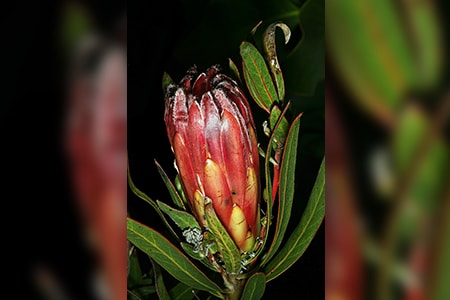
- Burchell's Sugarbush - Protea burchellii
- Bot River Sugarbush - Protea compacta
- Broadleaf Sugarbush - Protea eximia
- Longleaf Sugarbush - Protea longifolia
- Limestone Sugarbush - Protea obtusifolia
- Bashful Sugarbush - Protea pudens
- Dwarf Silver Sugarbush - Protea roupelliae hamiltonii
- Silver Sugarbush - Protea roupelliae roupelliae
- Stinkleaf Sugarbush - Protea susannae
Melliferae - Sugerbushes
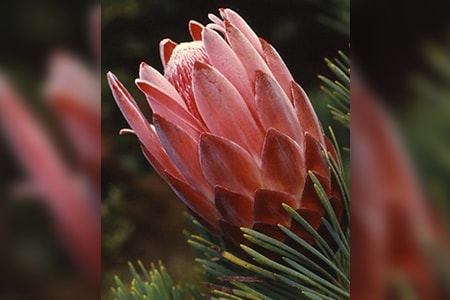
- Ladismith Sugarbush - Protea aristata
- Lanceleaf Sugarbush - Protea lanceolata
- Common Sugarbush - Protea repens
Microgeantae - Western Ground Protea
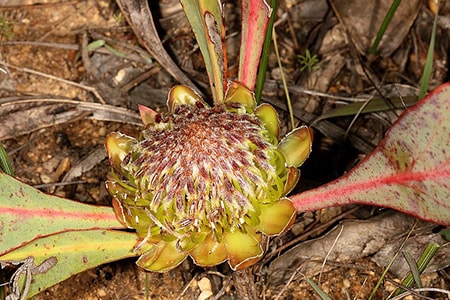
- Common Ground Sugarbush - Protea acaulos
- Largeleaf Sugarbush - Protea convexa
- Smoothleaf Sugarbush - Protea laevis
- Rolledleaf Sugarbush - Protea revoluta
- Wide Leaf Sugarbush - Protea angustata
Obvallatae - Bishop Protea
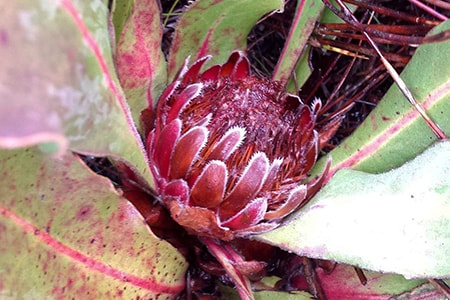
- Bishop Sugarbush - Protea caespitosa
Paludosae - Rooi Protea
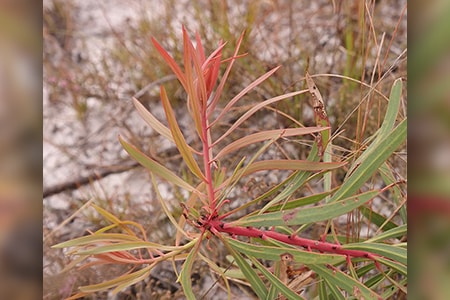
- Chimanimani Sugarbush - Protea enervis
Paracynaroides - Sneeu Protea
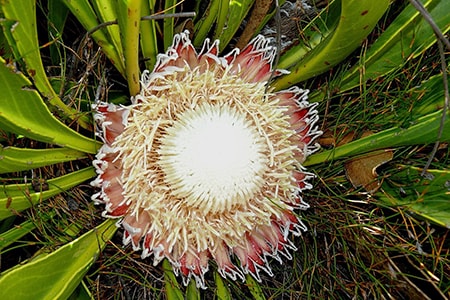
- Snowball Protea - Protea cryophila
- Frosted Sugarbush - Protea pruinosa
- Hoary Sugarbush - Protea scabriuscula
- Hart's Tonguefern Sugarbush - Protea scolopendriifolia
Parviflorae - Shale Protea
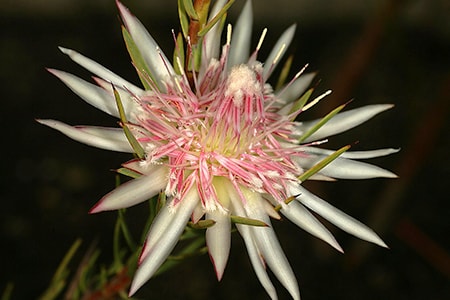
- Daggerleaf Sugarbush - Protea mucronifolia
- Swartland Sugarbush - Protea odorata
Patentiflorae - Mountain Protea
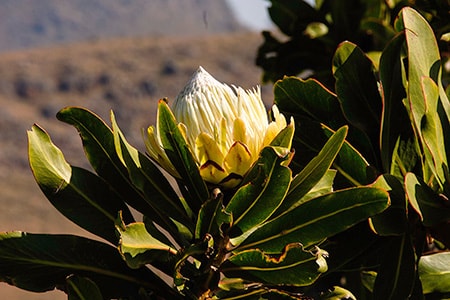
- Dwarf Northernwoodland Sugarbush - Protea angolensis angolensis
- Northern Woodland Sugarbush - Protea angolensis divaricata
- Saddleback Sugarbush - Protea comptonii
- Barberton Sugarbush - Protea curvata
- Blyde Sugarbush - Protea laetans
- Tall Woodland Sugarbush - Protea madiensis
- Transvaal Sugarbush - Protea rubropilosa
- Rocket Sugarbush - Protea rupestris
Pinifolia - Rose Protea
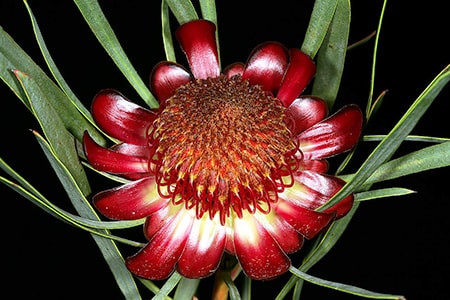
- Blackrim Sugarbush - Protea acuminata
- Grooveleaf Sugarbush - Protea canaliculata
- Mountainrose Sugarbush - Protea nana
- Ceres Sugarbush - Protea pityphylla
- Thistle Sugarbush - Protea scolymocephala
- Swan Sugarbush - Protea witzenbergiana
Protea - King Protea
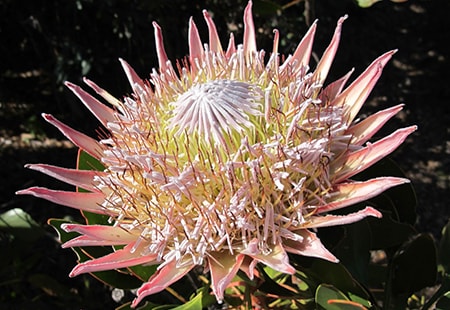
- King Protea - Protea cynaroides
Speciosae - Bearded Sugerbush
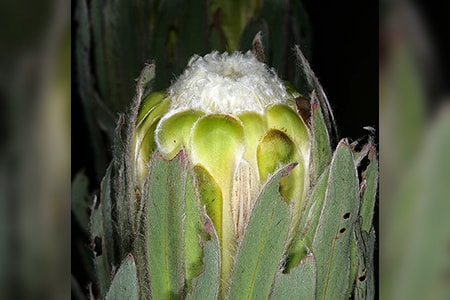
- Green Sugarbush - Protea coronata
- Red Sugarbush - Protea grandiceps
- Sawedge Sugarbush - Protea holosericea
- Greyleaf Sugarbush - Protea laurifolia
- Blackbeard Sugarbush - Protea lepidocarpodendron
- Strapleaf Sugarbush - Protea lorifolia
- Queen Protea - Protea magnifica
- Narrowleaf Sugarbush - Protea neriifolia
- Brownbeard Sugarbush - Protea speciosa
- Pink Sugarbush - Protea stokoei
Subacaules - Dwarf-Tufted Protea
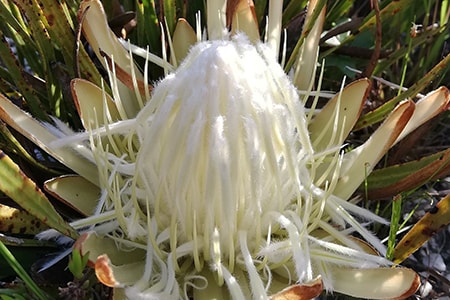
- Roughleaf Sugarbush - Protea aspera
- Toothleaf Sugarbush - Protea denticulata
- Thongleaf Sugarbush - Protea lorea
- Visgat Sugarbush - Protea piscina
- Reedleaf Sugarbush - Protea restionifolia
- Sandpaperleaf Sugarbush - Protea scabra
- Channelleaf Sugarbush - Protea scorzonerifolia
Types of Protea to Create an Unbelievable Garden
To meet diverse tastes, we included protea varieties of different colors and needs. As the plant is tolerant to cold, hardy, and drought, you can grow it in tropical, coastal, and cold regions. Once established, those unique fluffy blooms will surely catch everyone's attention.
So, there you have the most attractive yet different types of protea flowers. The flowers are widely grown in different parts of the world to be used as cut flowers, wedding flowers, or to enhance the beauty of typical spring gardens.



